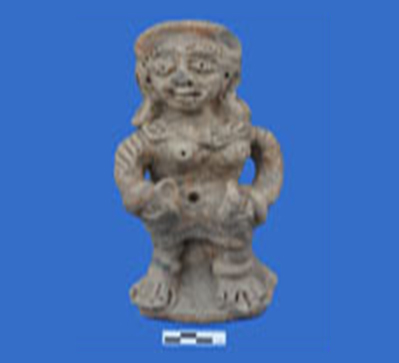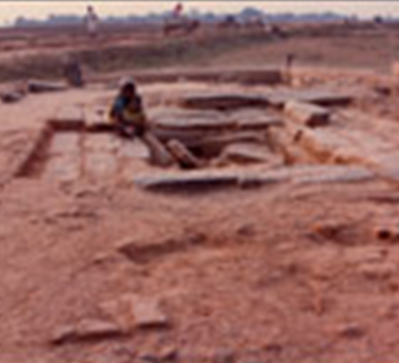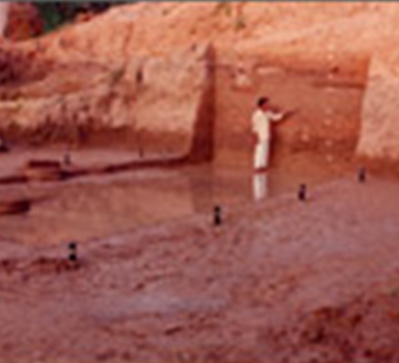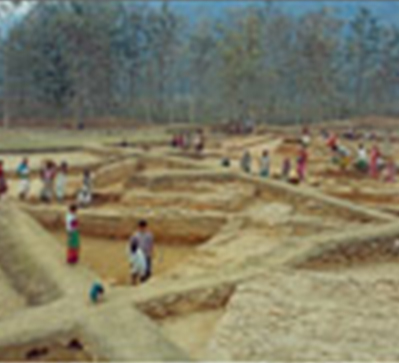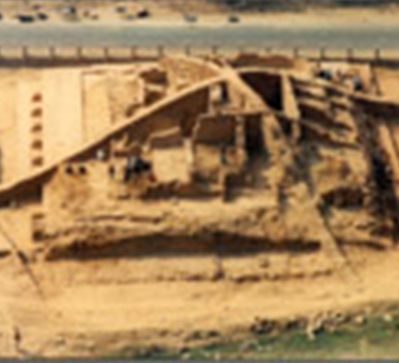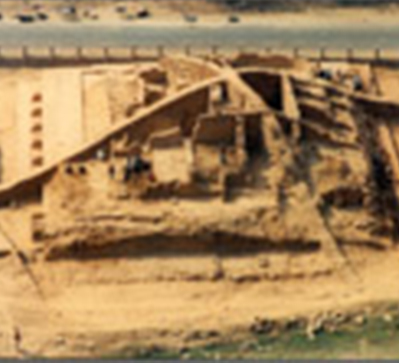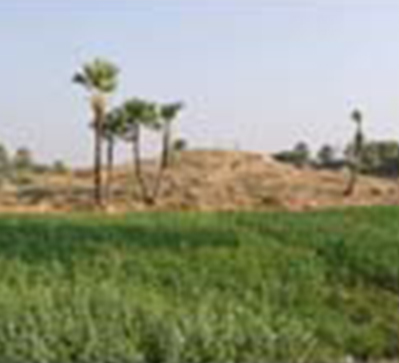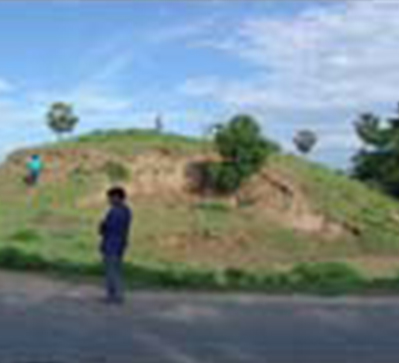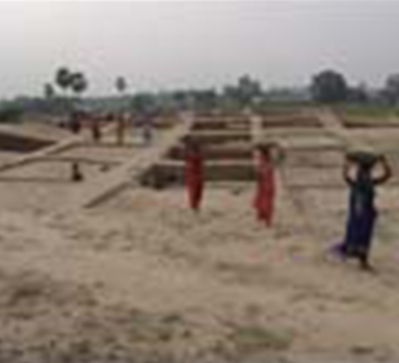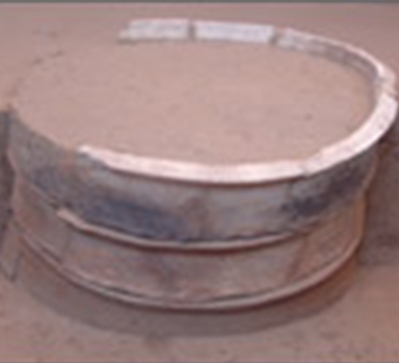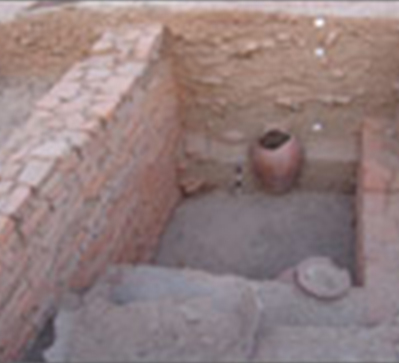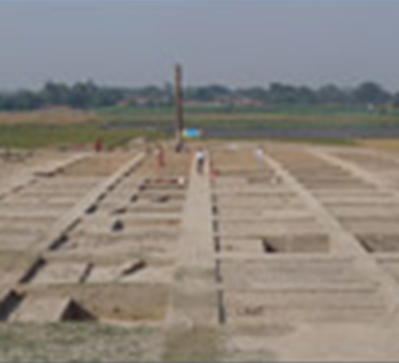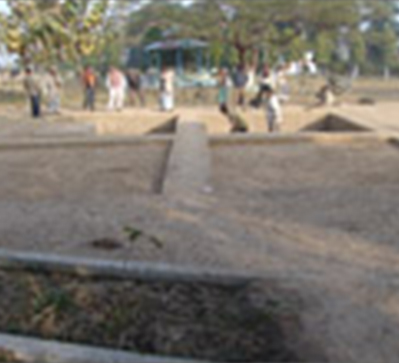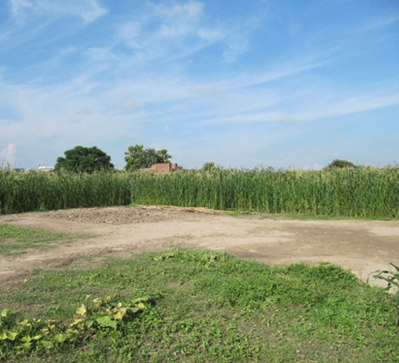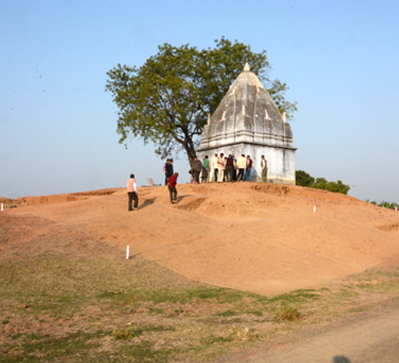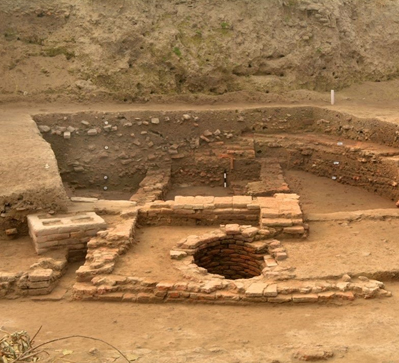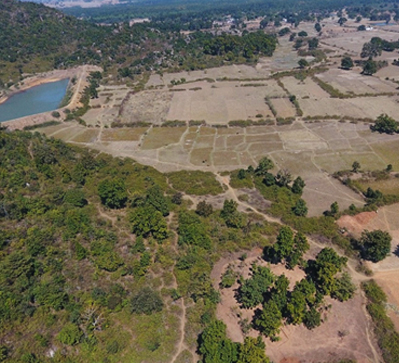Sitagarha
| Location | 23°57’17” N; 85°26’25” E |
| District | HAZARIBAGH |
| State | JHARKHAND |
| Excavation Years | 2019-20, 2020-21 & 2021-22 |
The site of Sitagarha is located about 13 km south-east of district headquarter of Hazaribagh reachable via pucca road.
Excavation Branch III, Patna of the Archaeological Survey of India resumed excavation at site of Sitagarha in District Hazaribagh for the season 2019-20, 2020-21 & 2021-22. The excavations were carried under the direction of Dr. Rajendra Dehuri. The aim of the excavation was to know the nature of the site, cultural succession as well as historicity of the region, through documenting the structural and antiquarian remains.
Excavation at site brought to light a part of monastery with triratha in plan. It was partially exposed brick built monastic cells in western and north-western part of the mound. East facing five cells, in rows along with verandah running in north-south orientation, further south facing one cell and verandah have been exposed. All the cells are located along verandah. The outer face of the walls was badly damaged due to growth of tree over the mound and structures. Possibly verandah had vital role and used as worship place for the residential monk because brick brackets were developed at either side of the entrances of the cells facing east, for keeping sculpture in systematic manner. Most of the bracket walls were badly damaged or missing. The monastic cell structure is dating back to the 12th century CE. as attested by inscribed images found from the structural complex.
Important antiquities found from the excavation are images of seated Buddhas in Bhumisparsa mudra, images of Avaloketeswaras, Taras, plaque depicting miniature Buddha image and decorated pedestals in duly arranged manner and several architectural fragments lying around. Special mention may be of large Avalokiteshwar image was found lying upside down in the central cell.
There are some sculptures represent inscription in maithili script in local dialects and nagari script in Sanskrit language and local dialect characters of about 9th to 12th century CE. The minor antiquities recorded from the site are iron objects, hopscotches, sling balls, terracotta beads, pestles etc. The iron objects were recovered in a large quantity, which include nails, arrow head, and hooks besides slag.
The pottery is mostly wheel thrown and well fired. The red ware, red ware with wash, and black ware vary from medium to coarse fabric were retrieved. Red ware is the predominant it includes vases, bowls, lids etc. Some of them are decorated with notches, horizontal bands etc.





